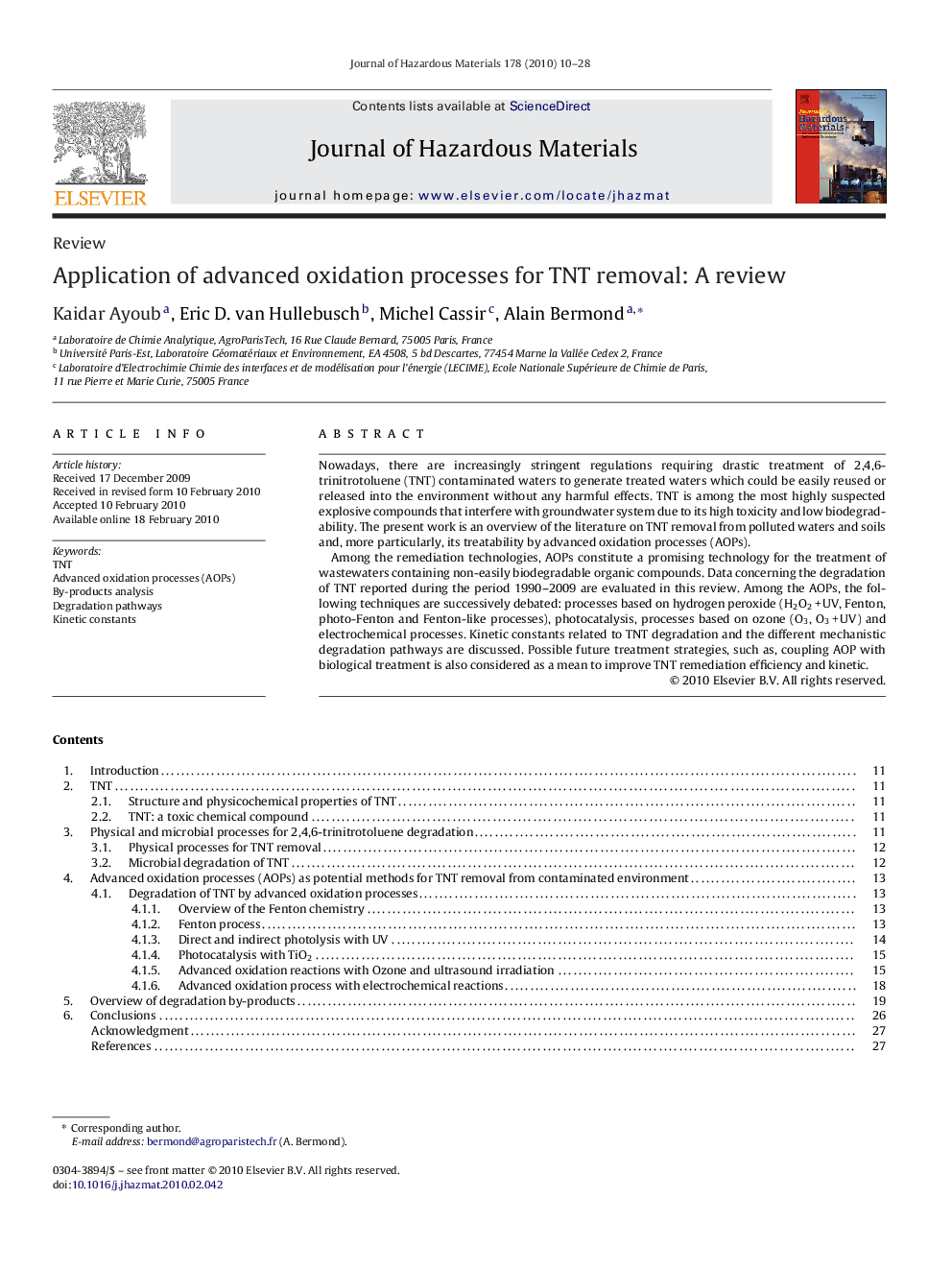| Article ID | Journal | Published Year | Pages | File Type |
|---|---|---|---|---|
| 580228 | Journal of Hazardous Materials | 2010 | 19 Pages |
Abstract
Among the remediation technologies, AOPs constitute a promising technology for the treatment of wastewaters containing non-easily biodegradable organic compounds. Data concerning the degradation of TNT reported during the period 1990-2009 are evaluated in this review. Among the AOPs, the following techniques are successively debated: processes based on hydrogen peroxide (H2O2Â +Â UV, Fenton, photo-Fenton and Fenton-like processes), photocatalysis, processes based on ozone (O3, O3Â +Â UV) and electrochemical processes. Kinetic constants related to TNT degradation and the different mechanistic degradation pathways are discussed. Possible future treatment strategies, such as, coupling AOP with biological treatment is also considered as a mean to improve TNT remediation efficiency and kinetic.
Related Topics
Physical Sciences and Engineering
Chemical Engineering
Chemical Health and Safety
Authors
Kaidar Ayoub, Eric D. van Hullebusch, Michel Cassir, Alain Bermond,
